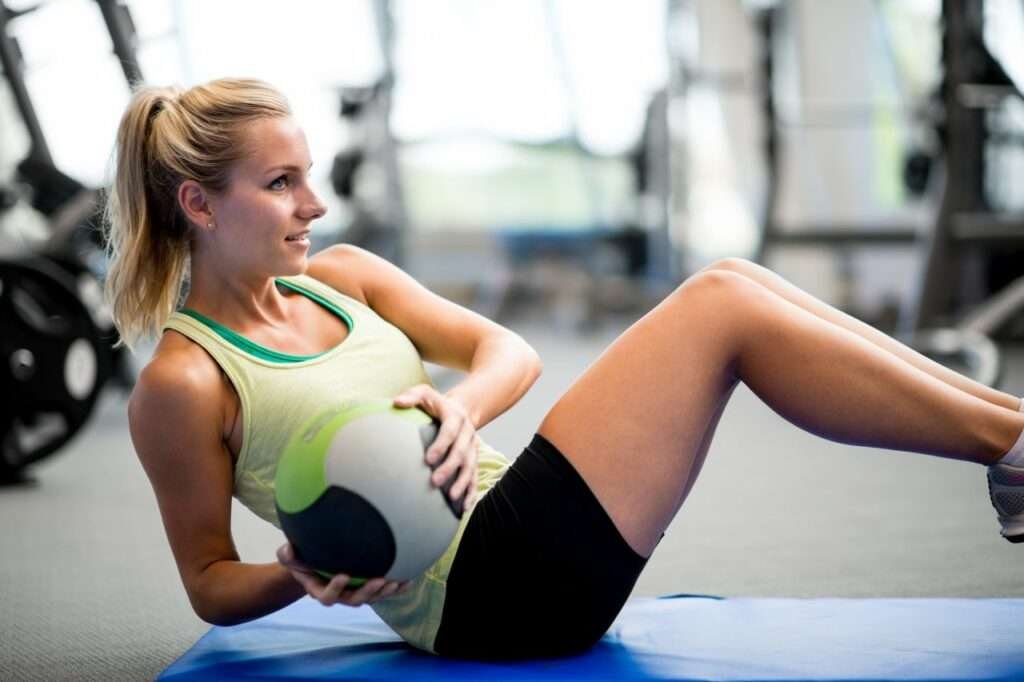Fitness Tips section for quick solutions to common inquiries. Whether you’re seeking workout advice or nutritional guidance, we’re here to assist you on your journey to a healthier lifestyle.”
Fitness Tips: Frequently Asked Questions (FAQs)
1. What should I eat before and after a workout?
- Before: A pre-workout meal or snack should be balanced, containing carbohydrates for energy and some protein for sustained energy. Examples include a banana with peanut butter, yogurt with fruit, or a small smoothie.
- After: For optimal recovery after a workout, it’s important to prioritize meals rich in protein and carbohydrates. These nutrients help restore glycogen levels and support muscle repair. Examples include a protein shake, grilled chicken with rice, or a whole grain wrap with lean meat and veggies.
2. How often should I work out?
The frequency of workouts depends on your fitness goals and schedule. For general fitness, most experts recommend at least 150 minutes of moderate aerobic exercise per week or 75 minutes of vigorous aerobic exercise, plus two days of strength training.
3. How long should my workout be?
The ideal workout depends on your goals and fitness level. For general health, aim for at least 150 minutes of moderate-intensity exercise per week, split across several days. Individual workouts can vary from 20 to 60 minutes. Listen to your body and adjust based on your energy levels.
4. How can I prevent injuries during my workouts?
- Warm up properly before exercising.
- Use proper form and technique.
- Gradually increase intensity and duration of workouts.
- Listen to your body and rest when necessary.
- Use appropriate footwear and attire.


5. how can lose weight fast ?
Cardiovascular Exercise: Activities like running, cycling, or swimming burn calories effectively.
High-Intensity Interval Training (HIIT): Combines short bursts of intense exercise with brief recovery periods, boosting metabolism.
Strength Training: Builds muscle, which burns more calories at rest, aiding weight loss in the long term.
Compound Movements: Exercises that engage multiple muscle groups, such as squats or deadlifts, maximize calorie burn.

6. How important is rest and recovery?
Rest and recovery are vital parts of any fitness routine. They give your muscles the time they need to repair and grow stronger, helping to minimize the risk of injury. Adequate rest between workouts helps prevent overtraining and burnout. Prioritize sleep, as it supports overall recovery and performance. Incorporate active recovery days with light exercise or stretching to maintain mobility. Listening to your body and allowing time for rest will lead to better long-term fitness outcomes.
7. How to get motivation to workout quotes ?
- Set clear, achievable goals.
- Track your progress.
- Find a workout buddy.
- Mix up your routine to keep it interesting.
- Reward yourself for reaching milestones.
8. What’s the difference between aerobic and anaerobic exercise?
Aerobic Exercise:
Aerobic exercise, commonly referred to as cardio or endurance training, consists of continuous, rhythmic movements that raise your heart rate and boost oxygen intake to meet your body’s energy needs.
Duration: Usually done for a longer duration, such as 20 minutes or more, at a moderate intensity.
Examples: Activities include running, swimming, cycling, brisk walking, dancing, and participating in aerobic classes like Zumba or step aerobics.
Benefits: This type of exercise enhances cardiovascular health, increases endurance, improves lung function, helps burn calories, and supports effective weight management.
Anaerobic Exercise:
Anaerobic exercise consists of brief, intense bursts of activity where the body’s need for oxygen surpasses the available supply for energy production.
Duration: These exercises are typically performed in short, high-intensity intervals lasting from a few seconds up to about two minutes.
Examples: Common forms include weightlifting, sprinting, jumping, interval training, and high-intensity interval training (HIIT).
Benefits: This type of training builds muscle strength and power, enhances speed and agility, improves anaerobic fitness, boosts metabolism, and contributes to overall fitness levels.


9. How to relieve muscle soreness after a workout?
To reduce muscle soreness after a workout, try these tips:
- Cool down with gentle stretching or light cardio.
- Stay hydrated to support recovery.
- Eat a balanced meal or snack rich in protein and carbs after exercise.
- Consider a massage or foam rolling.
- Rest sufficiently between intense workouts.
- Use over-the-counter pain relief if needed.
10. What are some common gym etiquette rules?
- Wipe down equipment after use.
- Re-rack weights and equipment.
- Give others space and time on equipment.
- Avoid hogging equipment during busy times.
- Use headphones to listen to music and avoid talking on your phone.
Comment
You can ask me any questions in our comment section. Just post your Frequently Asked Questions on our comment section and we will get back to you on your respected mail id.





Leave a Reply